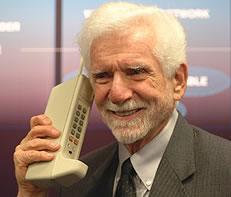You may not have known this, but America’s obsession with mobile calling goes all the way back to the 1930. Landline telephone users could be connected via radio to oceanic passenger liners at sea at the low, low cost of about $7 per minute which is the equivalent of just under $100 per minute in today’s dollars.
Today’s society would come to a screeching halt without mobile devices. In fact, as of this summer, there were over 327 million mobile phones in the United States alone compared to our population of 310 million people. That means there are more cellphones in the US than there are people! We use our mobile phones for everything from phone calls, texting, social media, gaming, banking, to navigation and everything else between.
A Mobile Timeline:
1930: Wealthy seafarers may call home while crossing the Atlantic to tell loved ones how utterly boring sea travel really is.
1946: The first mobile telephone call is placed in St. Louis, Missouri from an automobile after 10 years of work by Bell Labs scientists. The chatty driver nearly kills three pedestrians and a cat.
1947: AT&T launches Mobile Telephone Service. Only 3 people could call at the same time in any given city. *100% true.
1965: AT&T launches Improved Mobile Telephone Service. Up to 12 callers at a time per city. The average wait time for NYC was 30 minutes to make a call.
1973: Motorola makes the first truly mobile phone call with a prototype the Motorola Dyna-TAC. The phone weighed 2.5 pounds.
1980’s: “Bag Phones” decrease in size and become popular “car phones” for those who could afford the roughly $1 per minute rate plans.
1990’s: Bag Phones are still popular; however Motorola is successful in reducing the size of the mobile handset to roughly the same size as a WW2 handheld radio.
1997: Sprint launches the first all-digital nationwide network, making CDMA a household name. (That’s code division multiple access for the tech geeks out there.)
2002: Research In Motion launches the Blackberry 5810, in my opinion, the first successful smartphone. For the next 5 years, Blackberry would enjoy status as the King of Smartphones.
2004: The Motorola V3 Razr hits the market. While not being a smartphone, it was the phone to have. By 2007 three out of every four handsets was a V3 Razr.
2007: AT&T and Apple launch the iPhone in an exclusive agreement (that would last until 2011). The iPhone was the first multi-touch interfaced device and completely changed the mobile world as we knew it.
2008: T-mobile launches the G1, the first OS phone and the birth of Android begins.
2010: Sprint launches the HTC Evo; the first phone capable of reaching 4G speeds. Android, by Google, being an open source OS, becomes available for all carriers and thus becomes the only real competition for the iPhone.
Mobile phone technology has been progressing at a breakneck speed for the past 30 years and there is no indication of it slowing down. It is predicted that by 2015 mobile internet usage will more than triple that of fixed usage (laptop, desktop, & tablets).
How relevant are you? Quiz yourself- How many of these mobile marketing techniques are you familiar with?
- SMS: (short message service) Also known as texting. Limited to 160 characters, you can send short marketing messages.
- MMS: (multi-media message service) Includes images, video, and sound.
- Mobile Applications: Ads are hosted within the application design and are everywhere from widgets, games, to email platforms and browsers. This has, by far, become the most prevalent form of mobile marketing to date.
- QR Codes: (quick response barcodes) is a form of barcode that modern smartphones can scan via their camera and learn more about a product, business, or service.
- Pay-Per-Call: Ads can include a clickable link that initiates a billable phone call.
- Mobile Marketing Banners: These are just like your full-size website banners but adjusted to fit on mobile websites and optimized to load quickly on mobile networks.
How does this affect marketing?
Take a look around you. Are people staring at billboards? How about the sides of buses?
They’re on their cell phone.
In the United States, every day, 35% of mobile users access Social Media, 40% use email, 60% take pictures, and 75% send text messages (including picture mail). With mobile internet use projected to triple fixed usage, marketers need to understand how people use their devices, discover the value of this platform, and learn to reach that mobile audience.
Mobile is the future and it’s not going to change. Fully one third of the people reading this are doing so on a tablet or smartphone.
Where are your marketing efforts focused?




